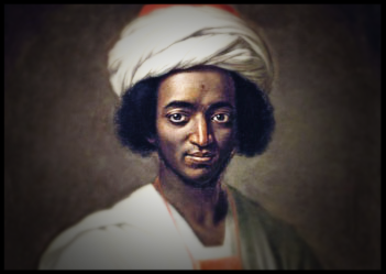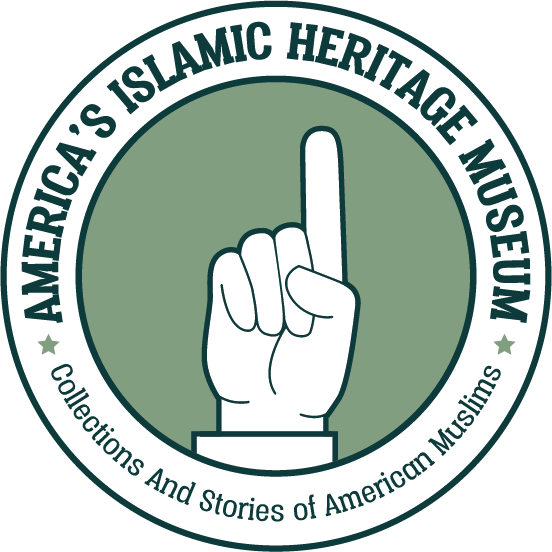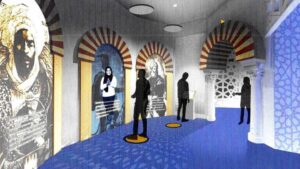1700’s
The 1700s ushered in the first known Hafiz or Muslim scholar in the person of Ayub ‘Job’ Suleiman Dgiallo who was born in Bondu, in Futa Toro, to a Fulbe family of Muslims. Ayub was known as Job ben Solomon, the Fortunate Slave, well educated and prominent. Job was the first known Hafiz (Islamic Scholar of the Quran) in America. In 1730 Job ben Solomon was captured and sold into slavery. He came here on the slave ship called the Arabella, which landed in Annapolis, Maryland. A tobacco farmer named Alexander Tosley of Kent Island purchased Job and renamed him Simon. By 1731, Job had escaped to Delaware where he was caught and arrested for not having a travel pass. Once back on the plantation, Job’s owner provided him with a private prayer space and made his enslavement a little easier. Job later wrote a letter in Arabic to his father for his freedom. Somehow, the letter reached the hands of James Oglethorpe, who was the deputy governor of the Royal Africa Company. After reading, a translation of the letter, James Oglethorpe, decided to help Job become free. By 1734, Job received his freedom. When he first arrived in England, he wrote the Quran down three times from memory. While in England, Queen Caroline gave Job a gold watch. By July 1735, Job reached his homeland and his family. Lamine (Al-Amin) Jay, born in Timbo, was Job’s friend who, was captured with him and received his freedom a year later after Job.
In 1741, in New York, three Moorish crew members of a captured Spanish ship were sold into bondage and protested their enslavement and conditions, swearing revenge. After several fires flared up around town, during March and April of 1742, hysterical residents believed and feared that a slave revolt was imminent and suspected the Spanish Moors called Negroes were deeply active and involved.
In 1753 two Moors ‘Muslims’ from As Sali, Morocco appeared in South Carolina’s records. Adel Conder and Mahamut (Mahomet) petitioned the local government in South Carolina in Arabic for their freedom and won. Their story states, that in 1736 they were in a battle with the Portuguese, lost and were captured. They had agreed to come here and work as indentured servants for five years for Captain Henry Daubrib. They were later transferred to Daniel LaRoche, who enslaved them for another ten years until 1753 when they petitioned the authorities about their case.
In 1767, Kunta Kinte arrived in Annapolis, Maryland enslaved. In Alex Haley’s book, Roots: The Saga of an American Family, chapter one says Kunta was born in the early spring of 1750 to Omoro and Binta Kinte in the village of Juffure, up river from the coast of Gambia. Kunta had a brother named Lamin, Suwadu, and a baby brother named Mahdi. Kunta got his name from his grandfather’s middle name. In the book Alex Haley talks about incense burning “the thin blue smoke went curling up, pungent and pleasant,” and of the village Imam Kajali Demba calling the people to prayer “the nasal wailing of Kajali Demba, the village alimamo, began, calling men to the first of the five daily prayers that had been offered up to Allah for as long as anyone living could remember.” In the book, “Roots” Kunta was best remembered for maintaining his prayers while he was enslaved and refusing to give up his Islamic name.
In 1768, Charno, a Muslim who was enslaved in South Carolina and owned by Captain David Anderson, was asked to show his ability to write. He did so by writing lines of script from the Qur’an. He wrote out the Al-Fatiha (the opening chapter of the Qur’an) and four of the last five Surahs of the Quran. Charno was among the few slaves who left behind a manuscript. Prior to the Civil War, Charno’s literary skills were noticed and quoted on a page of William A. Caruthers’ 1834 novel “The Kentuckian,” published in New York. It took the country seventy years before a translation of Charnos’ Arabic writing, was made available on November 23, 1838, by William Hudgson in Philadelphia.
From 1769 –1790s more than a dozen Muslim names appear in runaway slave advertisements ads like Jamina, Hagar, Mahomet, Armer, Osman, four Sambo’s, Quamie, Ishmael, Mingo, Mustafa, and others who were described as of the Moorish breed or from a Moorish country.
In 1770’s theWahhab brothers were shipwrecked on the coast of North Carolina. Once there they settled, married, and started a farm. Their descendants had owned one of the largest private hotel chains in Ocracoke Island off the North Carolina coast.
In 1784, Tennessee Governor John Sevier records an encounter in Western North Carolina with a dark-skinned, reddish-brown complexion people who were supposed to be of Moorish descent and who claimed to be Portuguese ‘Portyghee.’ In the late 1700s in east Tennessee, an Englishman named Jonathan Swift was married to a Melungeon woman and utilized Melungeon men in his own silver mining operations. His dark-skinned companions were known as “Mecca Indians.”
From 1774–1783 there were at least six people with Islamic names who fought in the Revolutionary War as colonial soldiers. One of them was Yusuf Ben Ali, also known as Joseph (Benenhali) Benehaley, who fought with General Sumter in South Carolina. After the war, General Sumter took Joseph Benhaly with him inland to Stateburg where they settled down. Joseph Benehaly’s name appeared in the 1790 census of Sumter County.Revolutionary war records also show that Bampett Muhamed was a Corporal in the Revolutionary War army, from 1775-1783 in Virginia. Francis Saba was a sergeant with the Continental Troops roll 132, 1775-1783 and Joseph Saba was listed as a Fifer in the Continental Troops roll 132, 1775-1783. Peter Salem changed his name to an Islamic name after he gained his freedom for fighting in the Revolutionary War in Massachusetts. His name also appears in the 1790 US census in Framingham. Another African American Revolutionary war hero who had an Islamic name was Salem Poor of Framingham, Massachusetts. Both Peter Salem and Salem Poor had US postage stamps issued in their honor in the 1970s.
In the late 1770s, Salim the Algerian was a Muslim from a royal family of Algiers. He was captured by Spaniards into slavery to the French in New Orleans. He eventually got his freedom after running away from slavery. He lived a while among the Native American Indian tribes and settled in Virginia. Salim eventually met Thomas Jefferson, attended the first Continental Congress, and died an insane man after having given-up his family and religion for America.
In 1786, two men appeared in Charleston dressed in the Moorish habit in which aroused a great deal of suspicion by their strange ways. An officer of the law tried to question them, found out they were “Moors,” and did not speak English. According to Charles Reznikoff’s, book The Jews of Charleston, concluded after some time passed they determined that the two of them were of the “Jewish Nation.” They took the two men to the home of a woman on East Bay Street who understood their language. She found out that they sailed from Algeria to Virginia where they had been arrested “on suspicion of being Algerians.” They then traveled overland to South Carolina. The woman’s name was Mrs. Starr Barrett, a Jewish woman who was born in the Barbary States.
In 1790, a group of eight Moor’s Francis, Daniel, Hammond, and Samuel, along with their wives Fatima, Flora, Sarah, and Clarinda petitioned South Carolina authorities and the House of Representatives for their freedom. The Moors stated that their arrival here came when they were in a battle fighting for the Empire of Morocco against an African King when, they lost and were taken, prisoners. Captain Clark had the Moors delivered to him and he promised them that he would take them to England where the ambassador from Morocco would purchase their freedom. Instead, he brought the Moors to South Carolina where he sold them as slaves. After some period, the Moors were able to purchase their freedom. The Moors petitioned to be treated as free whites and to rule that they are not subject to the laws that governed blacks and slaves. A committee of the House of Representatives decided in their favor and sent the matter to the senate, of which, “The Journals of the House of Representatives 1789-1790 called the “Free Moors Act.”
In 1792, the legislature passed a law, which stopped the importation of slaves in the state. One provision stated that Moors could not be brought into South Carolina from other states in the Union by either land or sea. In the closing of the 1700s two groups of people are found, the Guineas and Males of West Virginia. Some of them lived in northern Barbour and southern Taylor counties. Many of them have the last names of Adams, Collins, Croston, Dalton, Kennedy, Mayle, Newman, Norris, and Prichard. Prior to 1800s the names Male, Norris, Dorton, Harris, Canaday, Newman, and Croton were the most common. Some reports say the name Males comes from the infusion of Mali blood into the area. By 1810, the degree of non-white mixture was so great that the census records recorded the Males and Guineas as Mulattos or mixed race.


